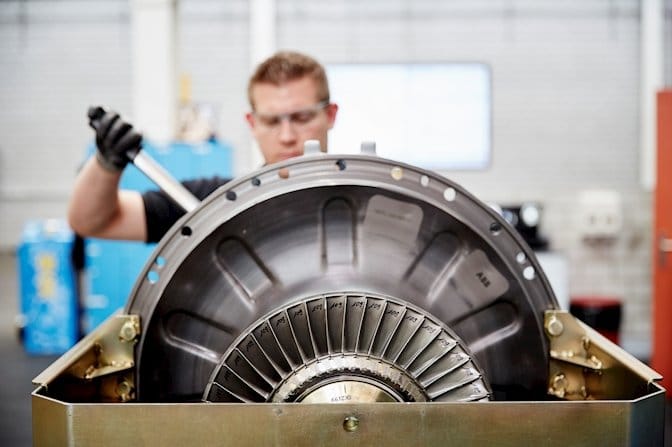Is the American workforce ready for the Fourth Industrial Revolution?
By Greg Scheu, President – Americas Region, ABB
Innovation can be disruptive. History shows us that, in the face of major disruption, the winners embrace change and adapt. Just look at the impact that personal computers have had on the workplace. Today, it would be difficult to find a good job that does not require at least basic computer skills. The innovations unleashed by computer science in the 1980s and 1990s triggered unprecedented productivity gains and changed our lives.

We now stand at a new crossroads. The Fourth Industrial Revolution has brought artificial intelligence, cloud computing and predictive analytics to the workplace. In the emerging industrial era, machines are increasingly capable of telling us how they feel, which means they can be repaired before they break down. Renewable energy will be unlimited by geography as transmission systems expand under seas and across continents. Cities of the future will be free of traffic emissions, and many buildings will produce more energy than they consume. Collaborative robots will work side-by-side with humans.
Countries that embrace innovation are leading in competitiveness and job creation. Robotics, one of the fastest-growing technologies in the world, is a case in point. While some people are concerned that robots could take jobs away from humans, the reverse turns out to be the case. The three countries with the highest density of robots per factory workerSouth Korea, Germany and Japanalso enjoy exceptionally low unemployment rates. Without investing in automation, these strong economies would not be globally competitive, and their workforces would certainly feel the repercussions.
Rising productivity has always contributed to greater prosperity. Every previous industrial revolution has increased productivity, created jobs and raised incomes. The World Bank estimates that, since 1990, more than a billion people have emerged from extreme poverty and, globally, the proportion of those in extreme poverty has fallen from 35 percent to less than 10 percent. Thanks to higher productivity, the United Nations estimates that poverty was reduced more in the past 50 years than in the previous 500.
The potential gains from the Fourth Industrial Revolution are equally large. The United States has already taken many of the steps necessary to maintain its leading role in the technologies associated with these changes. As a country that has always been a driver of innovation, America is well-positioned to benefit from the latest methods of production.
Yet we must ensure that the American worker is not left behind. As manufacturing rebounds in the United States, it will not look the same as it did before. Modern industry needs trained and skilled employees in automation and advanced manufacturing. We must retrain the workforce of today and adapt education and training for the workforce of tomorrow.
To achieve the skills transition for the Fourth Industrial Revolution and ensure that all of society benefits from rising prosperity, partnerships are needed between government, industry and academia. Education, particularly the community college system, will play an important role in retraining our manufacturing workforce to operate the factories of the future. Industry and government need to show leadership by supporting STEM education with more resources, close collaboration and specialized expertise.
Industrial and technology companies are driving the progress the world requires. Technology from ABB, for example, enables utilities, industry, and transport and infrastructure customers to make their operations stronger, smarter and greener around the globe. Companies like ABB are developing solutions that are on the verge of triggering a great new surge in productivity and wealth creation. We all need to work together to make sure that the American worker wins with us.
This op-ed was also published on ABB.com,Automation.comandNewsandobserver.com







